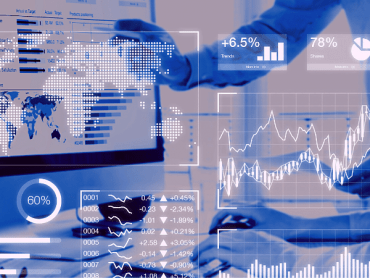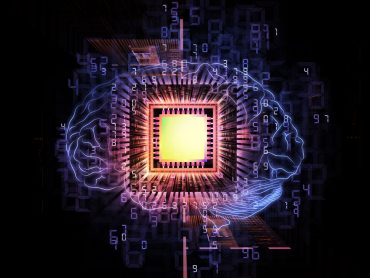
AI has found a greater responsibility in securing us from the unknown attacker.
Imagine networks that can predict downtimes and hacking threats, successfully! AI-enabled networking isn’t new but better and bigger. It has, in fact, propelled the idea of reinventing the services for enhanced user experience without increasing the costs whatsoever. So, when Ericsson predicted 25GB of mobile traffic on any active smartphone by 2025, the speculations were laid to rest while the possibilities were explored.
The networks of the future will capture your location and preferences while route you to the most appropriate network without interrupting services. In simpler use cases, your phone could notify you whenever you pass through a café serving your favorite cuisine. This is just the tip of the iceberg, AI-enabled networks have arrived with bigger possibilities in transpiring our real-time communication experiences at home workplaces and public places.
The AI roles have moved on from simply designing to managing and securing the networks.
Today, algorithms are tracking any abnormality in traffic that flocks to the network as a result of external attacks such as Distributed Denial of Service. Given the progressive development of such algorithms, accurately anticipating threats will become faster and easier.
Henceforth, AI’s role in cleaning the networks will gain adaptability in analyzing large volumes of data in real-time and ultimately predict incoming traffic. In the real world, networks, especially those of e-commerce stores will be better prepared for big occasions such as festivals, off-season sales and any event that pressurizes the networks.
Use Case – Faster and more accurate product filtering for online customers
AI-driven networks can put the inventory big data into analysis, match against the customer query and thus produce better product discovery results for customers, in real-time. Therefore, faster product browsing will lead to more purchases and so on. Meanwhile, in more critical scenarios such as healthcare, AI networks can empower physicians to make faster derivations out of thousands of analyzed documents and thus take important decisions in time.
However, the most visible transformation case studies come from call centers driving the support desks. Addressing millions of incoming service calls and routing them to the soonest available agent can be actualized if the AI-enabled networks are deployed to do so.
Networking giant Cisco, for example, is betting high on leveraging AI in their future data centers.
In September 2018, the company’s CTO John Apostolopoulos admitted the challenge of identifying malware in encrypted data. He said – ‘“The trend now is having encrypted traffic end to end and how we can identify that there’s malware in that traffic without decrypting that content,” Through their service Encrypted Traffic Analytics, CISCO enables the users to quickly spot security issues in their networks while successfully protecting the devices at risk.
Given the access to a mammoth of data about global threats, CISCO tracks and identifies patterns such as the usual packet size and their arrival times between a specific sender and receiver in an event of a malware attack.
Moreover, CISCO’s Tetration Analytics Systems, which automatically manages the network access lists, uses Big Data analytics to help the IT managers seek deeper insights into their data centers and allied resources.
AI for Parental Controls – Filtering and limiting access to web content
Given instant exposure to any genre of content over the web, parents have woken up to restrict the consumption of their kids. Content scheduling and restricting can be done after accessing the dashboards of the router, (Launch 192.168.1.1 in your web browser), certain AI apps can help automate the process. These apps set the schedules, restrict access to content based on genre, adult rating, and websites, limit screen time and perform complete blocking of inappropriate content.
Furthermore, such services from AI algorithms use advanced text analysis to narrow upon threats from sexual predators and cyberbullies thereby combating the risk device hack.
There are many parental control apps that deliver such comprehensive services for smart TVs, computer systems and mobile systems. A few of these apps perform complete censorship even when the devices are outside the home network.
As we usher into the era of smart homes and offices, the IoT market (powered by AI networks) is expected to reach USD 53.4 Billion by 2022. And beyond producing real-time alerts or triggering actions, AI has found a greater responsibility in securing us from the unknown attackers. This is in fact, an exciting time for the biggest community to get smarter.




























